The dual rear-wheel Chevrolet Silverado 3500 has the power and construction to take on some of the most grueling workloads for any pickup truck. However, some truck enthusiasts find the stock tires a bit small for their liking. So what are the biggest tires that can go on a stock Chevy 3500 dually? Here's what we found out.
For the 2012 and newer Chevy 3500 dually, you can fit tires that are 33 inches in overall diameter and 10 inches in width with a stock suspension and no rear wheel spacers.
Older dually 3500 models, however, can only take on tires up to 31.6 inches in diameter and 10 inches in width.
However, do take note that not all tires follow their exact published measurements. Always perform actual measurements on the wheel well and the tires before buying a new set.
Would you like to know more about the wheel-and-tire setups that can fit nicely on a Chevy 3500 dually? Do read on, because we've also included some tips on the pros and cons of upsizing your tires.
Best Tires For Chevy 3500 Dually
For decades, the Chevrolet Silverado has been one of America's best-selling truck lines, often coming second only to the Ford F-series. The Silverado 3500, in particular, is Chevy's representative in the 1-ton pickup truck segment.
Although traditionally, the "1-ton" classification signified a truck's capability of carrying a ton of payload, the term endures only by model association. Even if they all still belong to the 1-ton segment, modern 3500 trucks have evolved in design and construction and can carry almost four tons.
A big contributor to the Chevy 3500's amazing towing and payload ratings is the dual rear wheel (DRW) or "dually" option. With a total of four wheels at the back, the Chevy 3500 can take on more weight either from its cargo bed load or from a 5th-wheel trailer setup.
Some Chevy 3500 owners, however, are not satisfied just with carrying and towing performance. They want a more aggressive or more aesthetically-pleasing look to complement the truck's utility. Because of this, many truck owners choose to upsize their tires.
So what are the biggest tires that you can fit on a stock Chevrolet Silverado 3500 dually? The answer mostly depends on the year model or generation of your one-tonner.
2020 Chevy 3500 Dually Tire Size
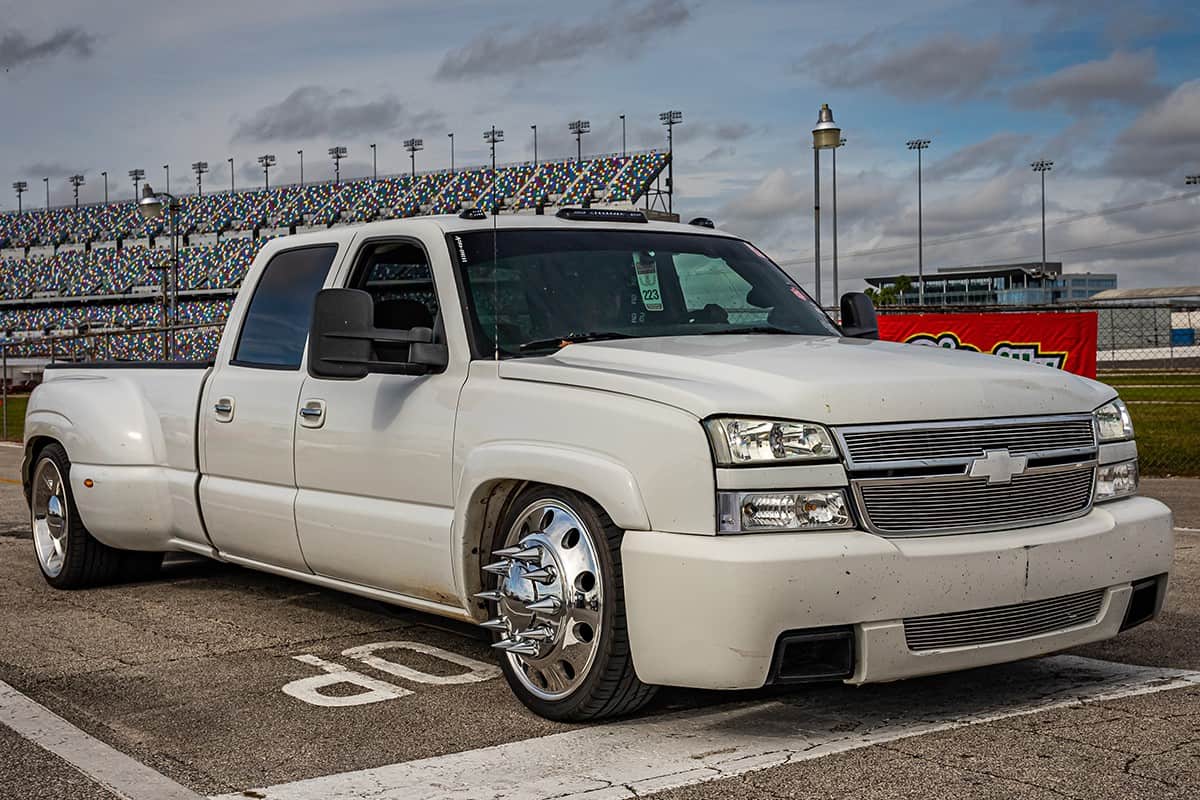
From 2012 to the present, the Chevy Silverado 3500 dually gained more length, width, and height than its predecessors. With a larger wheel well space, the current-generation Silverado 3500 DRW can take tires that are 33 inches in overall diameter and 10 inches wide.
For example, a completely-stock 2023 Chevy Silverado 3500 DRW comes with 17-inch OEM rims and 235/80/R17 tires. These tires are 31.8 inches in overall diameter and 9.3 inches wide.
However, if you want to upsize the tires without any modification, you can still fit up to 33.1" x 10" tires. The following wheel-and-tire combinations will be acceptable.
- 255/80/R17 - 33.1 inches overall diameter, 10 inches width
- 255/75/R17 - 32.1 inches overall diameter, 10 inches wide
Any bigger tires may require installing a spacer (especially for the dual rear tires), a suspension leveling kit, some fender lining trimming/cutting, or a few tweaks on the torsion bars.
Aside from the wheel well space, the biggest limiting factor in upsizing the Chevy 3500's tires is the potential rubbing of the dual rear wheels. If the tires are too wide, then they may rub against each other, especially when the side walls flex or bulge at the bottom during heavy load-carrying scenarios.
2010 Chevy 3500 Dually Tire Size
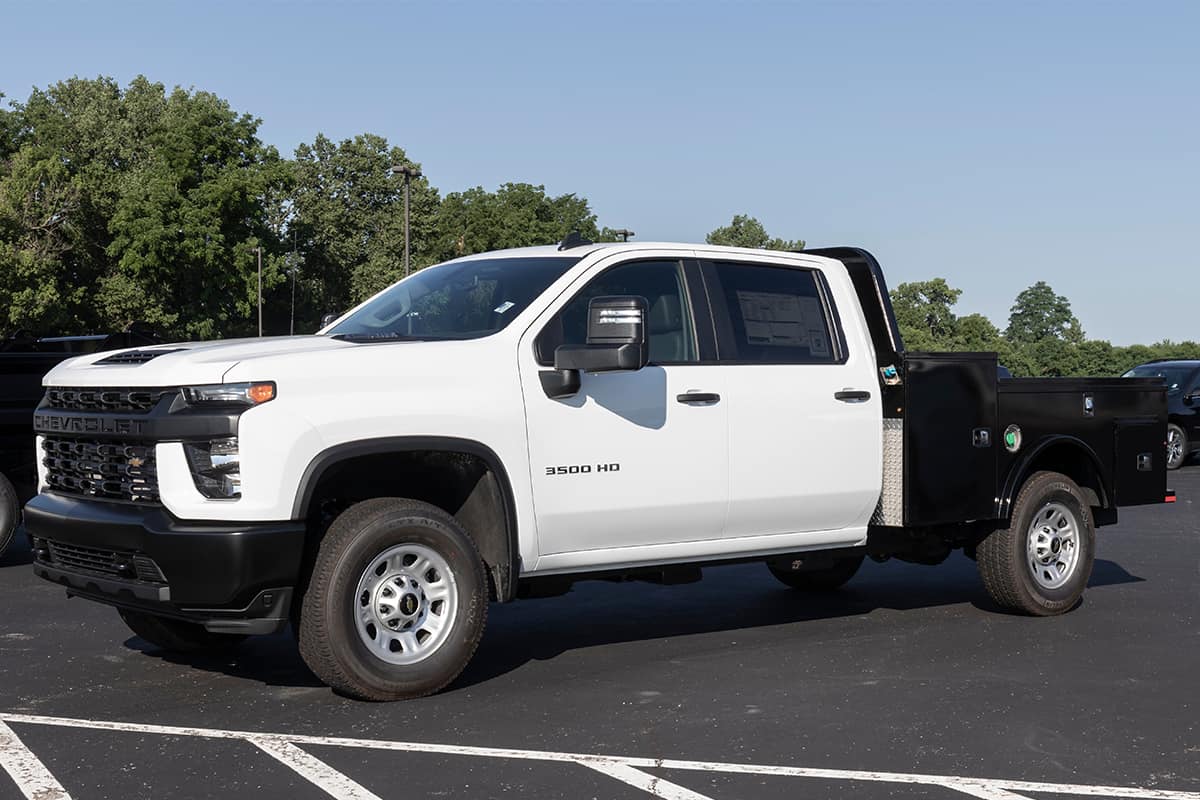
As mentioned previously, the earlier model years of the Chevrolet Silverado 3500 DRW can only accommodate smaller tires. For example, the stock 2012 Chevy 3500 dually comes with 225/75/R17 tires. These are 30.3 inches in overall diameter and 8.9 inches wide.
However, if you want to upsize the tires without any modification, you can still fit up to 31.8" x 9.3" tires. Incidentally, this is the stock tire size of the current-generation Chevy 3500 dually. The following wheel-and-tire combinations will be acceptable.
- 235/80/R17 - 31.8 inches overall diameter, 9.3 inches wide
- 235/85/R16 - 31.7 inches overall diameter, 9.3 inches wide
There may be other similar tire specifications that can fit, depending on the tire brand and aggressiveness of the tread pattern. As before, always do some careful measurements and, if possible, try to fit a similarly-sized tire before purchasing a whole set.
What Do The First Three Numbers Mean On Tires?
Tire manufacturers print the tire size specifications on the tire's side walls. However, for some people, these numbers may not be readily decipherable. For example, the stock 2022 Silverado 3500 uses tires with the following size code: 235/80/R17.
- 235 refers to the tire's width in millimeters.
- 80 denotes the tire's aspect ratio as a percentage.
- R17 means that the tire has radial construction (R) and is meant for mounting on a 17-inch rim or wheel.
How Do You Find The Overall Diameter Of A Tire?
We measure a tire's overall diameter from two corresponding points on the tire's outermost circumference, i.e. the treads.
Before measuring the tire, however, we need to ensure the following conditions.
- Mount and inflate the tire properly on its designated rim or wheel
- The tire should be resting on flat ground
- The tire should not bear any load during measurement. This means that the wheel-and-tire setup should not be installed on the vehicle.
How Do You Measure Tread Width?
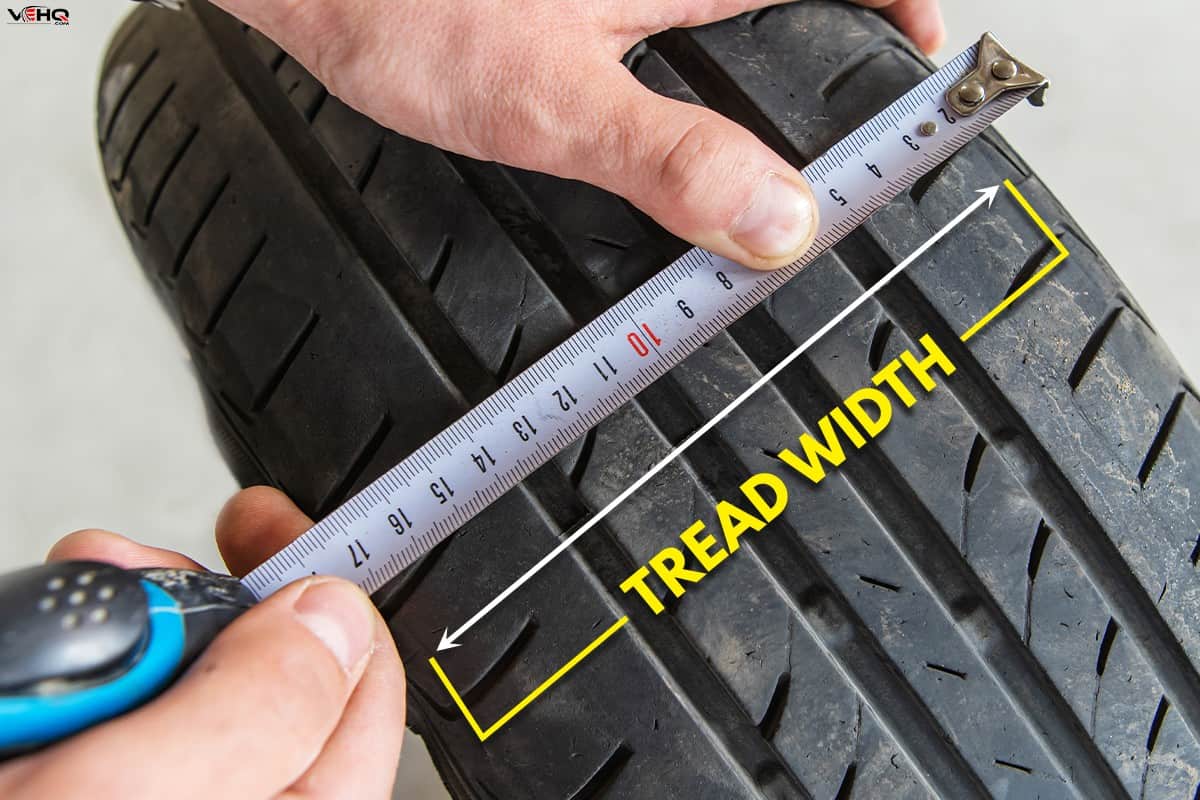
Using the same conditions in measuring overall diameter, we can also confirm a tire's width. A tire's width, or tread width, is the distance from one sidewall to the other. The width line should be perpendicular to both sidewalls.
Aspect Ratio Tire Size Meaning
Before we get to the aspect ratio, we must first determine the tire's "height." Tire height is also known as the "width" of the sidewall. Using the same measurement conditions, we can get the tire's height by measuring the distance from the rim's outermost point to the corresponding point on the tire's outermost circumference.
After getting the tire's height, we divide this number by the tire width. The quotient represents the tire's aspect ratio. For example, an aspect ratio of 80 tells us that the tire's height is 80% of its tread width.
Is There An Advantage To Bigger Tires?
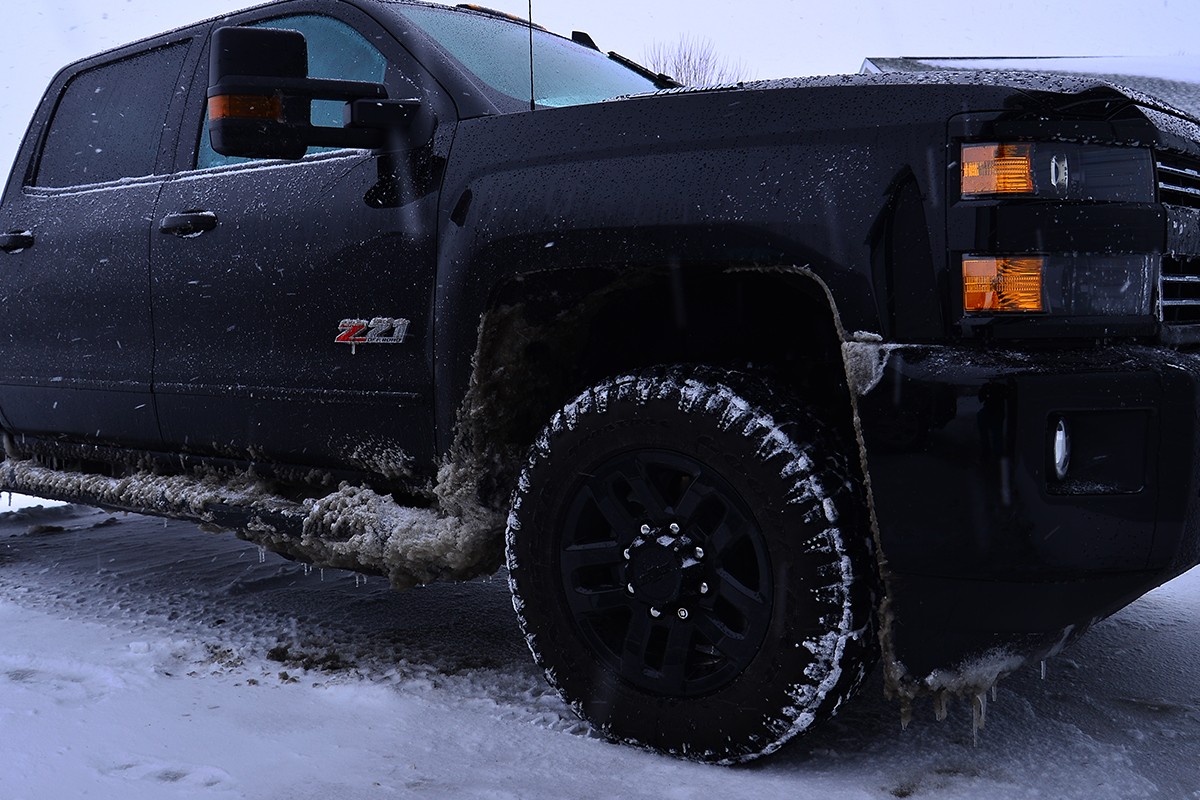
Many SUV and truck enthusiasts like to upsize their tires primarily to give their rides a more aggressive and rugged appearance. However, tire upsizing has benefits that are not only aesthetic but also practical in nature.
Higher Ground Clearance
Even by keeping everything else in stock configuration, a new set of bigger tires will already lead to a higher vehicle ground clearance. Consequently, the increased ground clearance will also lead to the following improvements in the vehicle.
- greater fording depth
- greater approach departure, and break-over angles
In general, a vehicle with a higher ground clearance makes it more capable of driving through challenging off-road trails, streams, rivers, or even flooded urban streets.
Better Traction
Wider tires create larger contact patches against the road, thus leading to higher friction and better road traction.
In general, wider tires improve your control over the vehicle when you're going over snowy, sandy, icy, or muddy surfaces. Additionally, wider tires let you control your vehicle better during highway cruising or even during fast cornering situations.
Improved Ride Comfort
Assuming that you're using the same rim diameter, taller tires generally have broader sidewalls. Broader sidewalls have more flexing capacity than thin ones, and thus the former can absorb road impacts better. Because fewer vibrations are going into the vehicle body, passengers can have a more comfortable ride.
Is It Bad To Have Bigger Tires?
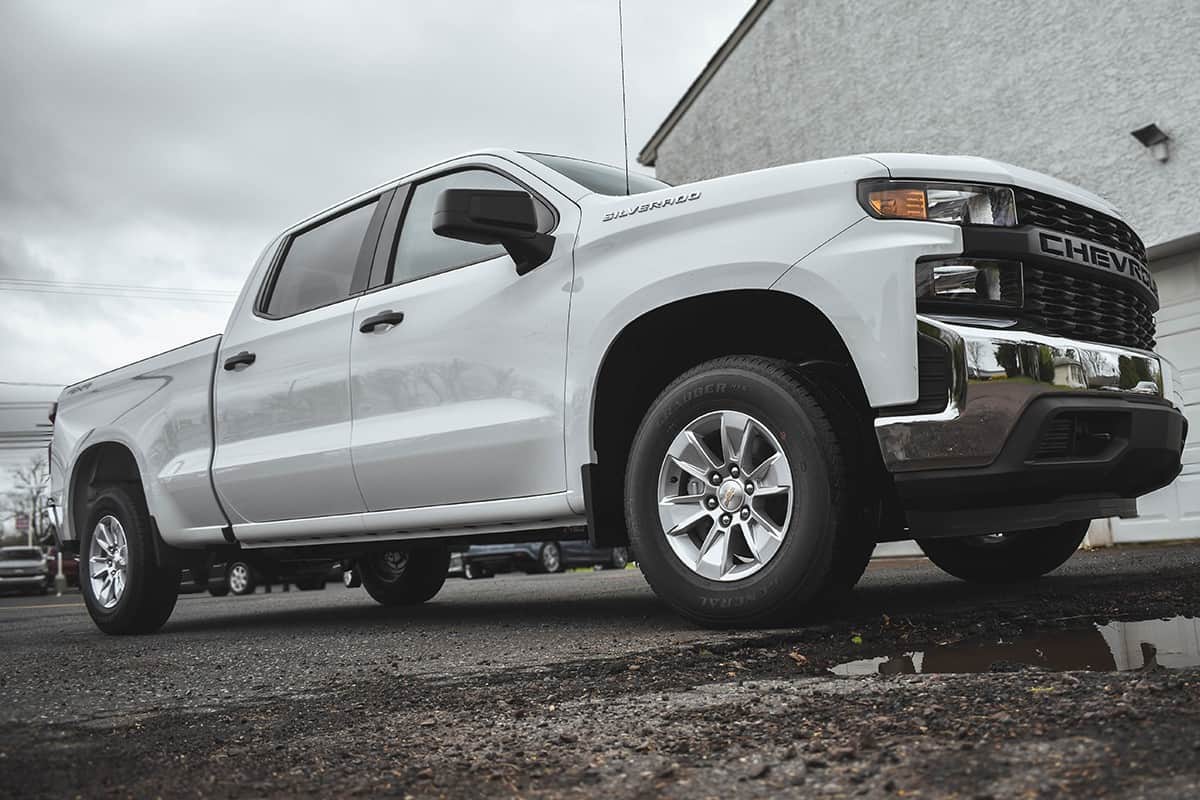
Although bigger tires will give you several tangible advantages, they also come with some disadvantages.
- Heavier steering - larger contact patches create more friction against the road. Although you may find the effect negligible at highway speeds, you will feel it more during dry steering situations like in cramped parking spaces.
- Less acceleration - bigger tires cause more rolling resistance due to the additional friction and weight. Adding more rolling resistance against the same engine means that your car will be slightly less agile.
- Worse fuel efficiency - because of the additional engine strain that they cause, bigger tires will result in higher average fuel consumption.
- Inaccurate speedometer reading - larger tires, particularly those with bigger overall diameters, will cause the vehicle to move faster with every spin compared to smaller stock tires. Because carmakers calibrate their speedometers according to stock wheel and tire sizes, a bigger set of tires will result in a skewed speedometer and odometer reading.
- More expensive - finally, and most importantly for some people, bigger tires are more expensive than smaller tires.
Tire experts advise us to minimize these negative effects by staying within 3% of our respective vehicle's stock overall tire diameters.
Nevertheless, we know that some large trucks and SUVs have wheel wells that can accommodate up to 15% tire upsizing.
How Much Can A Chevy Silverado 3500 Pull?
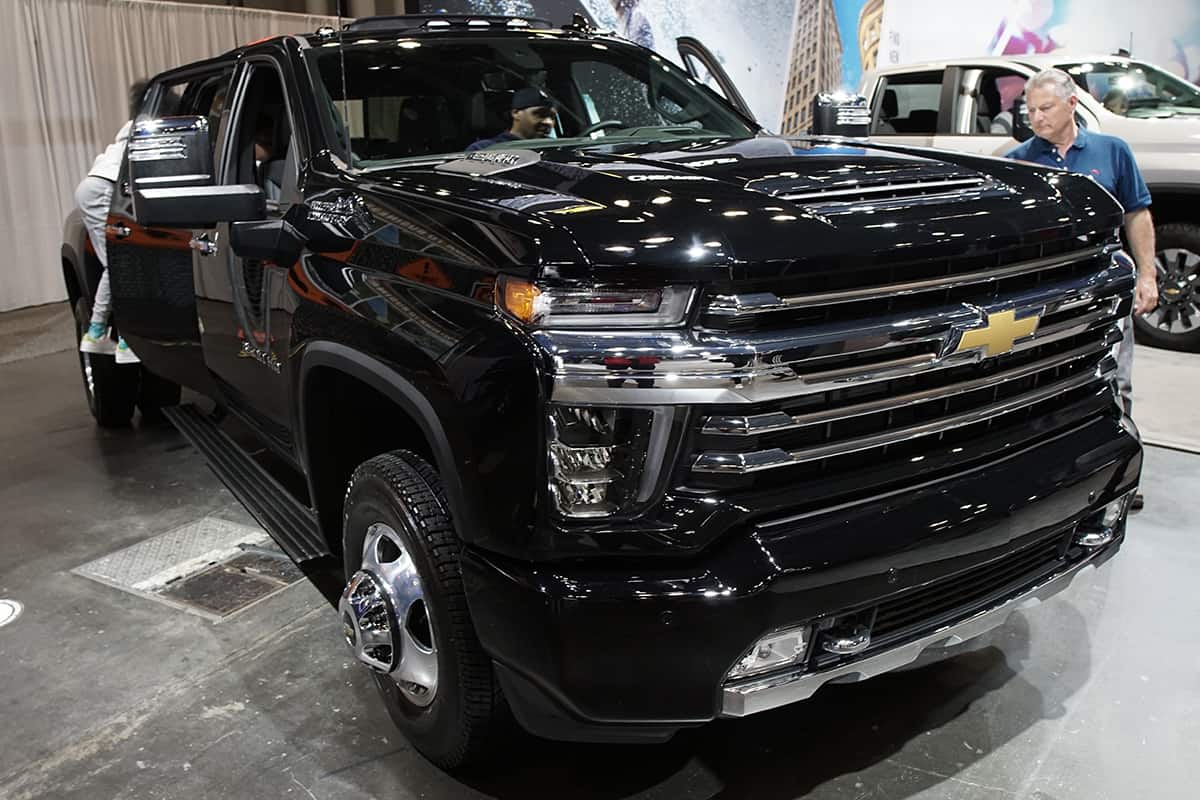
As we mentioned earlier, a DRW Silverado 3500 is much more work-capable than its single rear wheel (SRW) option. In fact, the Chevy 3500 can achieve its maximum payload capacity of 7,442 pounds and its maximum towing capacity of 36,000 pounds only with the DRW option.
You can achieve the maximum payload capacity with the 6.6-liter L8T V8 gasoline engine. However, you can only get the maximum towing capacity using the 6.6-liter Duramax V8 diesel engine.
Wrapping Up
The third and fourth-generation Silverado 3500 dually can take tires that are 33.1 inches high and 10 inches wide without any modifications needed. On the other hand, older Chevy 3500 models can only accommodate tires with a maximum height of 31.8 inches and a maximum width of 9.3 inches.
Thank you very much for reading. We hope we were able to help you figure out your preferred tire upsizing option for a stock Chevrolet Silverado 3500 dually.
For more interesting reads about tires, trucks, and other automotive topics, you may also check out these great articles below.
What Is The Biggest Tire I Can Put On An 18 Inch Rim?

Thank you for the helpful article. I am repurposing a dually 3500 Chevy Silverado chassis from year 2000 for an ice cream truck. What is the largest and widest wheel/tire size you would recommend?